Exploring Long-Lasting Drones: A Comprehensive Guide
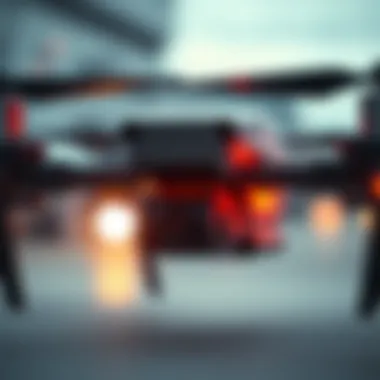
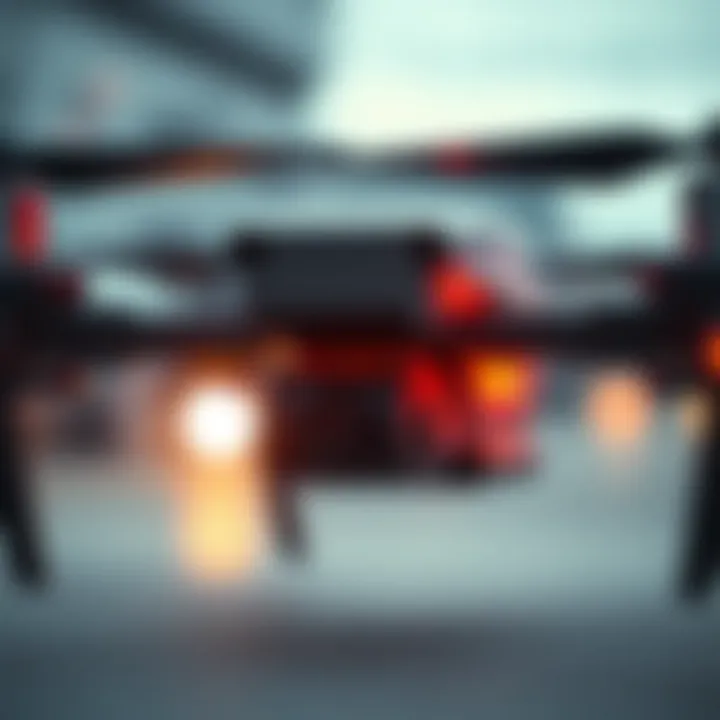
Overview
Drones have become an integral part of various industries, extending far beyond the recreational use initially envisioned. They are now pivotal in sectors like agriculture, photography, search and rescue operations, and even policing. As these unmanned aerial vehicles evolve, the need for long-lasting drones has emerged as an important topic. The longevity of a drone not only impacts its operational efficiency but also significantly affects its overall value and user experience.
Technological advancements, especially in battery technology, have paved the way for drones that can stay airborne for extended periods. Improved materials and designs are also contributing factors. This article takes a comprehensive look at what makes drones endure over time, examining the intersection of technology, design, and user practice. By understanding what features contribute to drone durability, users can make informed decisions that lead to more reliable performance, ultimately enhancing their aerial applications.
Features & Specifications
When evaluating long-lasting drones, several key features should be considered. These aspects fundamentally affect the drone's operational lifespan and user experience:
- Battery Life: The heart of any drone's endurance is its battery. Look for drones equipped with lithium-polymer (LiPo) batteries, which tend to offer higher energy density and longer flight times compared to previous battery types.
- Payload Capacity: Drones designed for carrying heavier loads often have a robust frame, which contributes to their durability.
- Build Quality: Materials used in drone construction, like carbon fiber and high-impact plastics, greatly influence resilience against crashes and natural elements.
- Weather Resistance: Drones with weather-resistant features can operate in various conditions, thereby extending their usability.
- Intelligent Flight Modes: Modern drones often come packed with smart features that can automatically adjust for optimal performance, such as GPS hold and altitude stability.
- Maintenance Alerts: Some drones feature onboard diagnostics, which can remind users when maintenance checks are necessary.
Technical Specifications
- Max Flight Time: Up to 40 minutes for premium models.
- Range: Effective operational range can reach up to several kilometers.
- Camera Specs: Options for high-resolution cameras up to 4K, with capabilities for live streaming.
Pros and Cons
While long-lasting drones showcase a variety of benefits, it's also essential to acknowledge their drawbacks:
Advantages:
- Extended Flight Time: Long-lasting drones provide more operational time, thus covering extensive areas or extended tasks more effectively.
- Reliability: Fewer recharges translate to more reliability, especially in critical missions like wildlife monitoring or disaster response.
- Higher Return on Investment: Although the initial cost may be higher, long-lasting drones often prove more economical in the long run due to less frequent replacements.
Disadvantages:
- Higher Initial Cost: The latest technology often comes at a premium price.
- Weight: Some high-end models may be heavier, potentially affecting maneuverability.
- Complexity: Enhanced features may lead to a steeper learning curve for novice users.
User Experience
Real-world experiences with long-lasting drones vary broadly, yet clear sentiments emerge. Many users appreciate the ability to accomplish more in a single flight, which addresses both time efficiency and operational costs. For instance, a commercial photographer remarked:
"With my new drone, I can do a full day's shoot without worrying about my battery dying on me at the worst possible moment. It’s been a game changer for my workflow."
Conversely, some users express frustration about the learning curve associated with new technology. Reviews on forums like Reddit illustrate this:
- "Great drone once you get used to the controls, but my first flight was a bit of a mess."
- "Love the battery life, but you really need to read the manual to maximize its features."
Buying Guide
When diving into the market for long-lasting drones, potential buyers should consider a few critical points:
- Assess Your Needs: Determine if you need your drone primarily for recreation, commercial use, or specific tasks like photography.
- Research: Check user reviews and testimonials, focusing on performance and reliability.
- Battery Technology: Look closely at battery estimates and the nature of charging; charging speed and overall lifespan matter significantly.
- Brand Reputation: Trustworthy brands often provide better support and maintenance options.
For anyone keen on investing in a reliable, long-lasting drone, consider exploring options from companies like DJI, Parrot, and Skydio for a mix of reliability and technological advancements.
For further reading on drone technology and usage, refer to resources like Wikipedia, Britannica, and community discussions on Reddit.
Understanding Drone Longevity
The lifespan of a drone often weighs heavily on the minds of both enthusiasts and professionals alike. Understanding drone longevity is crucial not just for maximizing an investment but also for ensuring seamless operations across various use cases. When talking about durability, we aren’t just considering how long a drone can fly, but also its resilience under different conditions and how well it can endure the tests of time.
Longevity in drones encapsulates a broad spectrum of factors, including the materials used in construction, the complexities of battery technology, and even the legal regulations surrounding their operation. Recognizing these aspects can aid in selecting the right drone tailored to one's needs, whether it be for commercial, recreational, or even research purposes. Every element plays a pivotal role; therefore, a comprehensive understanding can significantly enhance performance.
Furthermore, the implications of drone longevity extend far beyond merely owning a gadget that lasts longer. For commercial users, a drone's durability could translate into reliability, efficiency, and increased profitability. The notion isn’t just about flying high but maintaining a decent flight life without the constant worry of malfunctions or failures.
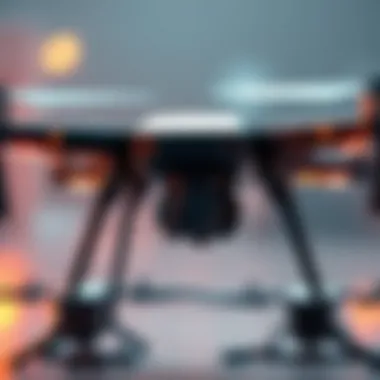
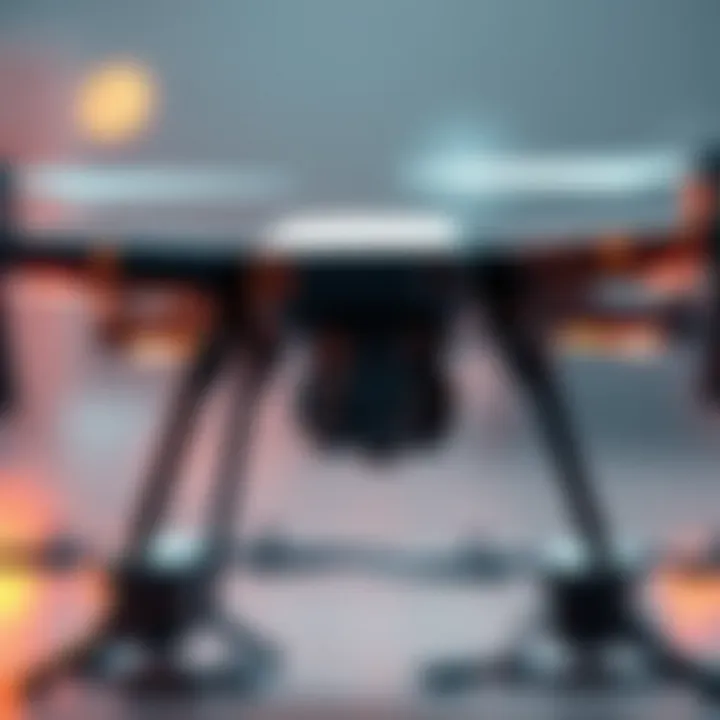
Whether it’s for delivering goods, surveying landscapes, or capturing breathtaking aerial photography, ensuring that a drone possesses the qualities of longevity can have profound impacts on productivity. In a rapidly evolving technological landscape, users need not only to stay informed but also ahead of the curve regarding how their investment can retain value over time.
Definition of Longevity in Drones
When we talk about longevity in the world of drones, we mean more than just the basic lifespan defined by hours of active flying. It fundamentally refers to the drone's ability to operate effectively over a prolonged period while enduring various environmental stresses. In essence, longevity can be defined as
- Operational lifespan: The number of flights or flight hours before significant maintenance is required.
- Material integrity: The durability of the drone's components, especially against wear, tear, and elemental damages.
- Technological adaptability: The ability to upgrade software and hardware without the need for a complete replacement.
In this context, a long-lasting drone doesn’t merely represent one that can fly for extensive hours but one that continues to perform optimally as it ages.
Importance of Long-Lasting Drones
The significance of long-lasting drones shines through across various fields of application. For those who engage in aerial photography, having a drone that stands the test of time means less downtime and more opportunities for that perfectly captured shot. Similarly, businesses using drones for inspections, package deliveries, or agricultural monitoring benefit immensely from gadgets that are known for their durability.
- Cost Efficiency: While the initial price tag may be higher for reliable drones, the savings realized from reduced repairs and replacements are substantial.
- Reliability in Critical Situations: Imagine relying on a drone during emergencies where time is of the essence. A robust drone will perform as expected without unexpected hiccups, making it invaluable.
- Brand Reputation and User Trust: Companies known for high-quality, long-lasting drones develop loyal customer bases, leading to sustained sales and repeat business.
Understanding the importance of longevity in drones is akin to understanding the essence of what makes them not just tools, but extensions of our capabilities. In this quest for durability, users can navigate their choices better, allowing them to invest wisely and enjoy enhanced aerial adventures.
Key Components Influencing Drone Longevity
The longevity of drones is not just a whim of manufacturers; it’s a critical aspect that influences their practicality for both casual users and commercial operators. The various components that contribute to a drone's lifespan can range from the technology in its battery to the quality of materials used in its design. With the increasing demand for drones in various sectors, understanding these components isn’t merely useful; it’s essential for making informed decisions.
Battery Technology Advancements
LiPo vs. Li-ion Batteries
When discussing batteries, two types often come into light: Lithium Polymer (LiPo) and Lithium-ion (Li-ion). LiPo batteries tend to offer higher energy density and can be made in varied shapes, a considerable advantage for drone manufacturers who often struggle with space. On the other hand, Li-ion batteries boast a longer lifespan overall. The choice between these two greatly affects not just the performance but also the durability of the drone in the long run.
LiPo batteries may allow for high discharge rates, making them quite poplar in the hobbyist market, but they usually require careful handling and maintenance to avoid issues like swelling or even damage. Conversely, Li-ion batteries might take a little longer to charge but present a more stable option for sustained usage. Each type has its unique features: LiPo may be lighter but is less forgiving than the sturdier Li-ion, making understanding these attributes crucial for anyone interested in sustainable drone technology.
Battery Life Calculations
Understanding how battery life is calculated is vital for ensuring that drones meet the user’s demands. The key characteristic here is the mAh rating, which gives an idea of how long the drone can run before needing a recharge. Notably, battery life is not a one-size-fits-all number; factors such as weight, wind conditions, and flight style all play significant roles.
This is where anticipating flight needs becomes of utmost importance. If users opt for specialized tasks requiring higher power, a proper calculation can assist in deciding on the drone model that will fit their specific uses best.
Moreover, the real-life performance may differ significantly from what’s advertised. Batteries may not always provide a straightforward experience, and knowing the specifications can prevent disappointments when it’s time to go airborne.
Charging Technology
Charging technology is continuously evolving and significantly impacts drone longevity. Many modern drones utilize smart charging systems that optimize the charging cycles, thus extending battery life. Rapid charging technologies can allow users to spend less time waiting on the ground and more time in the skies, but they can potentially generate more heat during the process, which might not always be beneficial for the battery’s integrity.
What’s noteworthy here is the emerging trend of wireless charging platforms, which can provide convenience to users. However, they could be less efficient and slower than traditional methods. Budding developments in solar-powered charging are also worth examining; imagine drones charging while they fly, although this concept still has a long way to go.
Material Durability and Design
Frame Materials and Their Impact
The frame is the backbone of any drone, providing structural integrity and influencing its overall longevity. Different materials like carbon fiber and plastics are commonly used, each having its specific characteristics. Carbon fiber frames are lightweight yet durable, offering greater resilience against impacts. This resilience, in return, prolongs the life of the drone, especially in unpredictable environments. However, the cost can be a limiting factor.
Conversely, while plastic frames may be cheaper and lighter, they often lack durability, especially under stress. Thus, a balanced choice between cost-effectiveness and strength could make or break a drone’s longevity. It’s all about what the user is willing to sacrifice.
Aerodynamic Design Considerations
Aerodynamics greatly affects how efficiently a drone flies, which directly influences its durability. Efficient designs minimize drag allowing the drone to maintain better energy consumption. This not only results in extended flight times but reduces stress on key components, enhancing longevity.
For instance, drones with smoother surfaces or unique shapes may experience less turbulence compared to bulkier models. However, designing for aerodynamics often clashes with the need for robust frame materials. Striking this balance while ensuring efficient designs could be a challenging frontier in drone technology.
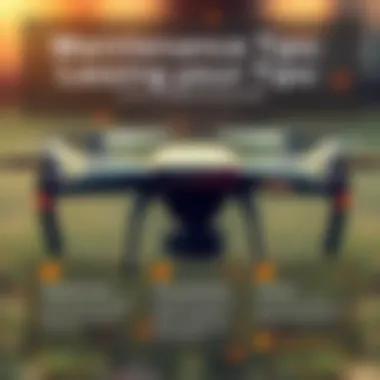
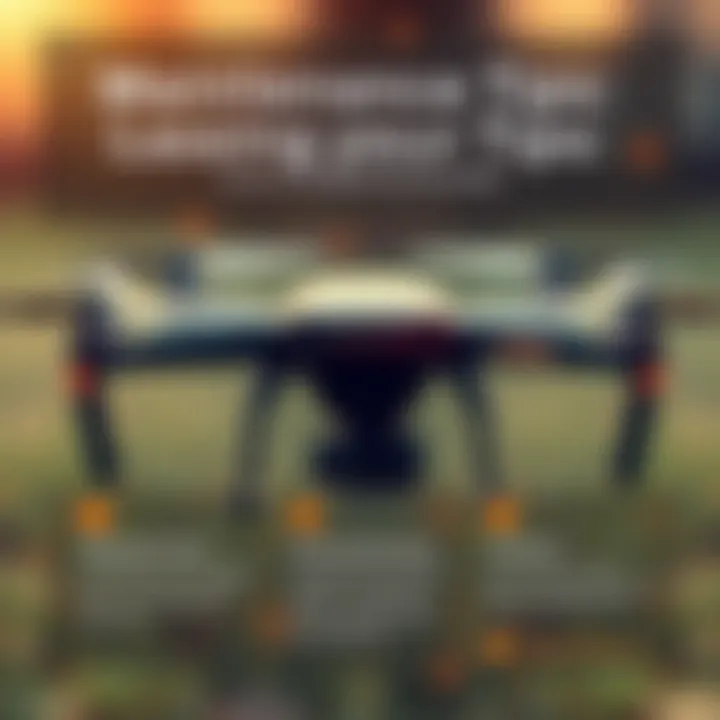
Propulsion Systems and Efficiency
Motor Types and Longevity
Selecting between sensorless and sensored motors can impact the overall lifespan of a drone. Sensorless motors are known for their simplicity and efficiency, but can suffer from wear and tear if not properly maintained. Sensored motors, while slightly more complex, often provide better performance feedback, potentially allowing for longer operational lifespans.
Also, heat generation is critical; more efficient motors generate less heat and can operate longer under load. Ideally, investing in a well-manufactured motor can result in prolonged drone life, thus providing a good return on investment.
Propeller Design and Performance
The design of propellers is another pivotal factor in drone propulsion systems. The thrust generated can be heavily affected by blade shape, length, and material used. For instance, plastic propellers may be the go-to for many entry-level drones due to their affordability; however, they can lead to quicker deterioration after repeated use.
On the other side of things, carbon fiber propellers are both lightweight and incredibly strong, dramatically improving flight efficiency and durability. Users utilizing drones in demanding environments, such as high winds, benefit more from higher quality propeller designs. Proper propeller maintenance, coupled with superior design choices, directly correlates to the drone's longevity and reliability.
Maintenance Practices for Extended Use
Maintaining drones isn’t merely supervising their airworthy state; it’s an essential practice that significantly impacts their longevity and operational efficiency. Regular maintenance can mean the difference between a drone that soars reliably and one that crashes or faces failures. When you invest in a high-quality drone, understanding the best practices for upkeep ensures that you get the most out of your investment. This aspect is vital, especially for those engaged in commercial applications where reliability and performance are paramount.
Regular Inspection Protocols
The backbone of drone maintenance revolves around regular inspection protocols. Checking your drone before and after each flight doesn’t just align with good practice but also adds a layer of safety and reliability to your operations. Some key elements of regular inspection include:
- Visual Checks: Inspect the drone’s exterior for any signs of wear or damage, focusing on propellers, motors, and landing gear. A small crack could lead to disastrous results.
- Functional Tests: Before takeoff, conduct a short ground run. This not only ensures that all systems are operational but also that the radio signals are intact and responsive.
- Battery Condition: Regularly monitor the health of your batteries, looking for swelling, corrosion, or any unusual signs. A battery in poor condition can lead to unforeseen flight issues.
By instituting a regular inspection routine, operators can catch potential problems before they escalate into costly repairs or accidents.
Cleaning and Care Techniques
Cleaning your drone is more than just aesthetics. Accumulated dirt, debris, and moisture can adversely affect its performance. Therefore, adopting a good cleaning regimen is necessary. Here are some effective techniques:
- Post-Flight Cleaning: After each flight, wipe down the drone’s body and propellers with a soft cloth to remove dust or residues.
- Avoiding Liquids: Instead of using harsh chemicals, opt for isopropyl alcohol if you need to clean stubborn dirt. Remember, excess moisture can damage electronic components.
- Detailed Examination: During cleaning, take note of any unusual wear on the propellers or frame joints, which may need immediate attention.
Maintaining cleanliness promotes efficiency, ensuring that your drone operates at its peak performance.
Software Updates and Firmware Management
Drones like any other tech gadget require necessary software and firmware updates to function optimally. Neglecting updates might leave your drone vulnerable to bugs, compatibility issues, or even performance lags. Here’s how to keep your software in check:
- Regular Checks: Just as one checks for mechanical wear, regularly go into the drone’s app or control software to look for available updates. Many manufacturers include notifications, but it’s good practice to stay proactive.
- Backup Old Firmware: Sometimes, updates can introduce unforeseen issues. Keeping a backup of the last known stable firmware version also ensures quick recovery if an issue arises post-update.
- Calibrations: Post-update, always recalibrate your drone sensors. This ensures that the drone recognizes new parameters configured through the update process.
Taking the time to stay ahead on software management directly correlates with the reliability and performance of long-lasting drones.
"Proactive maintenance practices are not just precautions; they're investments into a drone's future performance and longevity."
By adopting these maintenance practices, drone users can enhance the durability of their equipment. In a rapidly evolving field, the attention to detail exhibited in maintenance will ensure your drone remains a dependable, long-lasting tool for all purposes.
Market Trends in Durable Drones
The drone industry is in a constant state of evolution, with market trends shedding light on the emerging patterns and preferences that shape the landscape of durable drones. Understanding these trends is crucial for anyone looking to invest in aerial technology, as they offer insight into what is driving innovation and consumer choice. Increasingly, durability and performance meld together, determining not only user satisfaction but also the product’s lifespan in a competitive market. Key elements such as technological advancements, shifts in consumer behavior, and anticipated future innovations play significant roles in this narrative.
Comparative Analysis of Popular Brands
When it comes to long-lasting drones, a comparative analysis of popular brands can provide valuable knowledge. Brands like DJI, Parrot, and Autel Robotics have established themselves as leaders in drone durability and performance. Each brand often focuses on different aspects of durability, which can influence a buyer's decision.
- DJI is known for its extensive range of models, offering solid build quality coupled with user-friendly features. From the compact Mavic series to the sturdy Matrice series, DJI integrates improved materials along with advanced technology for enhanced lifespan.
- Parrot, on the other hand, emphasizes lightweight construction and innovative design while maintaining resilience against environmental factors. Their Anafi series stands out for its resilience and compact size, making it appealing for both recreational and commercial users.
- Autel Robotics offers drones that rival high-end competitors like the DJI series, sometimes featuring interchangeable components which contribute to longevity.
By examining these brands, one can note how marketing strategies also reflect consumer demands for durability. Rather than merely relying on buzzwords, these companies engage in engineering practices that bolster drone longevity, thereby increasing market competitiveness.


Consumer Preferences and Insights
Consumer preferences in the drone market have evolved with an increased understanding of what constitutes quality and longevity. Insights gathered from user reviews and community forums on platforms such as Reddit reveal a clear trend: users are highly attuned to battery life, component replaceability, and repair options. Users are now looking for:
- Extended Battery Life: Buyers are leaning toward drones with longer operational times, valuing those that can sustain flight without needing constant recharging.
- Ease of Maintenance: Drones that allow easy access to components for replacement or repair are increasingly popular. Consumers are wary of models that require specialized tools or extensive procedures for simple fixes.
- Robust Design: Users show a preference for rugged drones suited for various terrains. Drones designed for tough conditions have gained traction in the market, often being favored for outdoor and professional applications.
Future Innovations in Drone Technology
As we peer into the future of drone technology, it becomes apparent that the industry is on the brink of significant innovations that promise to enhance durability further. Some anticipated developments include:
- Advanced Battery Chemistry: Continued research into battery technology could yield longer-lasting batteries that also charge quicker, making drone downtime a thing of the past.
- AI and Smart Features: Future drones may incorporate AI to monitor their own health, suggesting timely maintenance and reducing the likelihood of breakdowns.
- Sustainable Materials: The trend toward environmentally friendly products might lead manufacturers to explore new materials that provide durability without compromising on weight or aerodynamics.
"The drone industry is not just about flying. It’s about resilience, adaptability, and innovation."
Practical Considerations for Users
When it comes to choosing a long-lasting drone, users must focus on practical considerations that can greatly influence their experience and satisfaction. The landscape of drone technology evolves quickly, pushing the need for a well-informed selection process. Engaging with the various factors that affect longevity helps ensure that you invest in a reliable piece of equipment that meets your specific needs.
Choosing the Right Drone for Specific Needs
Commercial Vs. Recreational Use
The distinction between commercial and recreational use is not just a matter of how much you’re willing to spend, but rather what you expect from your drone in terms of functionality and performance. If you’re in the business of aerial photography, surveying, or mapping, a commercial drone often comes with features tailored for those tasks—think advanced camera capabilities, robust sensors, and superior stability. Commercial drones are typically built with durability in mind, as they may undergo more rigorous use compared to recreational counterparts.
On the flip side, recreational users usually seek drones for fun or casual photography. These drones tend to be lighter and easier to fly, often prioritizing user-friendliness over extensive feature sets. While they can be less expensive, they might not offer the same longevity or resilience under stressful conditions like commercial drones. To summarize, your intended use will shape your technical requirements and expectations, ensuring you select an option that fits the bill.
Terrain Adaptability
Adapting to various terrains can be a game-changer for drone users, particularly for those who venture into difficult or unpredictable environments. Drones with high terrain adaptability can function effectively whether you’re capturing footage over a sandy desert or navigating through forest canopies. This adaptability is often linked to design elements such as ground clearance and obstacle avoidance systems.
Certain drones come equipped with larger propellers or specialized landing gear, enabling them to handle rough terrains better than standard models. For those in search of a versatile drone, this feature becomes a key aspect, enabling reliable performance in diverse conditions. Nevertheless, keep in mind that high adaptability can sometimes come with added weight or complexity, which might not suit every user’s need.
Assessing Price Versus Longevity
One of the burning questions in the drone market is whether a higher price guarantees longevity. The truth is, while more expensive drones typically offer advanced features and better build quality, price alone cannot dictate longevity. Factors like regular maintenance, usage patterns, and care play enormous roles.
It's essential to assess what you receive for your investment. A moderately priced drone with good reviews might serve you just as well as a high-end counterpart if it matches your specific use cases. Don’t shy away from examining warranty options and build quality, as these can provide clues about a model’s long-term reliability.
User Reviews and Product Ratings
Finally, tapping into user reviews and product ratings can provide invaluable insights. They offer real-world feedback that can be more telling than specifications alone. First-hand experiences from other drone enthusiasts can illuminate potential pitfalls and advantages that you might not have considered.
When exploring reviews, look for consistent themes or issues mentioned across multiple platforms. Websites like Reddit or dedicated drone forums often contain conversations that can help clarify which models truly stand up to their claims of durability. Likewise, consider the importance of both the average rating and the volume of reviews when making your decision.
"User feedback is often the first line of insight into how a drone performs over time, making it a crucial part of the decision-making process."
Finale
In the world of drones, longevity isn’t just a buzzword; it’s a vital component that dictates a user’s experience and investment value. The emphasis on durable drones is increasingly becoming apparent, especially with the diverse applications they serve—from recreational uses to professional tasks in surveying, agriculture, and beyond. This article has navigated through the intricacies involved in understanding the essence of long-lasting drones and has covered various elements integral to making informed decisions.
Summation of Key Points
To recap, several critical aspects contribute to the appeal and utility of long-lasting drones:
- Battery Technology: Advances in battery design, such as the difference between Lithium Polymer (LiPo) and Lithium-Ion (Li-ion), have set the stage for improved endurance. Devices that leverage the latest in charging technology can offer longer flight times and quicker recharges.
- Material and Design: The choice of materials used in drone construction directly affects performance. Lightweight yet durable materials like carbon fiber can enhance longevity, enabling users to fly with confidence in various environmental conditions.
- Efficient Propulsion Systems: Motors and propeller designs play a significant role in driving efficiencies. The right combination ensures that energy consumption is optimized, leading to extended flight durations.
- Maintenance Protocols: Regular checks and maintenance practices can drastically improve the lifecycle of a drone. Cleaning, inspections, and firmware updates aren’t just chores; they’re investments in longevity.
- Market Trends: Keeping an eye on consumer preferences and brand innovations can guide users in selecting the best equipment suiting their needs and budget.
Final Thoughts on Drone Longevity
The journey through understanding long-lasting drones emphasizes how technology intertwines with practical considerations. Buying a drone involves more than just a financial decision; it’s about selecting a companion for aerial adventures that will serve reliably over time. As advancements continue, users should remain critical yet curious, looking for features that genuinely add value over the lifespan of the drone. It’s a rapidly evolving field, and being savvy about what’s available will only enhance the experience. The commitment to longevity indicates not just technological progress but a promise of trust for users, ensuring that their investment truly withstands the test of time.
"In an ever-changing tech landscape, durability and reliability are the keystones of sustained user satisfaction."
Embracing these insights will set the stage for smart purchases that pay off in enjoyment and performance. Whether you're an enthusiast or a seasoned professional, understanding what extends a drone's lifespan can elevate your experience into something remarkable.







